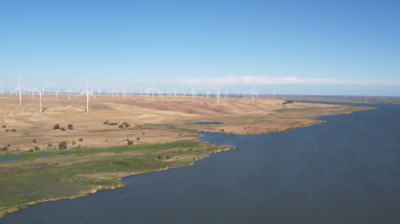CRC Spotlight Series: Strengthening Western Riverside County Energy Resilience
This is one in a series of profiles of the 12 winners of the California Resilience Challenge, a first-of-its-kind statewide initiative of the Bay Area Council and a diverse array of partners. The Challenge recently awarded $2 million in planning grants for a variety of innovative projects in communities across the state to address the growing impacts of climate change, including drought, floods, wildfires, and sea-level rise.
The ability of cities to locally respond to climate-related disasters and events depends heavily on the availability of 24/7 energy and power. In recent months, over 3 million California power customers were without power due to public safety power shutoff (PSPS) events, massive preemptive power shutoffs due to high winds and dry conditions that make fires more likely to occur and spread. While PSPSs are standard practice, they have become more frequent and impactful, effecting large areas of the state.
With a grant from the California Resilience Challenge, Western Riverside Council of Governments (WRCOG), in collaboration with its 19 member jurisdictions, will develop a comprehensive sub-regional Energy Resiliency Plan aimed at improving Western Riverside County’s resilience to PSPSs, power shortages, and emergencies.
The Plan will identify specific projects and strategies to develop independent energy sources in each jurisdiction, including back-up generators, energy storage, and development of local power microgrids. WRCOG’s subregion includes large minority and low-income populations, groups that are the most vulnerable to climate impacts. The Plan will place priority on identifying strategies to build energy resilience in these vulnerable populations, who are at higher risk for compounded complications from climate related events.
As part of the technical work undertaken to prepare the WRCOG Climate Action Plan’s Adaptation and Resiliency Strategy, increased incidences of extreme heat, wildfire, and flooding were identified as ongoing and future climate change-related hazards in the subregion. Similarly, California’s Fourth Climate Change Assessment shows that some of the largest expected energy consumption increases (+30-35%) are predicted to occur in inland portions of the Western Riverside County due to future growth and intensity of high heat events. Therefore, as the need for power to build resiliency to disaster events grows, the pressure on the existing power grid also increases.
“The energy sector is a substantial contributor of greenhouse gas (GHG) emissions that influence climate change,” says Casey Dailey, Director of Energy and Environmental programs for WRCOG. “Finding solutions for sustainable, renewable energy options will not only prepare the region for continued critical services during disaster events but will have the overall added benefit of reducing potential greenhouse gas emissions in Western Riverside County, thus slowing climate-change” Dailey explains.
In developing the Energy Resilience Plan, WRCOG will collaborate with UC Riverside’s Center for Environmental Research & Technology and Western Community Energy, a Community Choice aggregation program.
For more information on the California Resilience Challenge, please contact Policy Associate Anna Sciaruto or Vice President Adrian Covert.
Special thanks to California Resilience Challenge funders PG&E, JPMorgan Chase & Co., Valley Water, Metropolitan Water District, Southern California Edison, Resources Legacy Fund, Alaska Airlines, SFPUC, SD Bechtel Jr. Foundation, and Pillsbury; and special thanks to Advisory Committee members AECOM, Pillsbury, Climate Resolve, Environmental Defense Fund, Ceres, and the Governor’s Office of Planning and Research.





